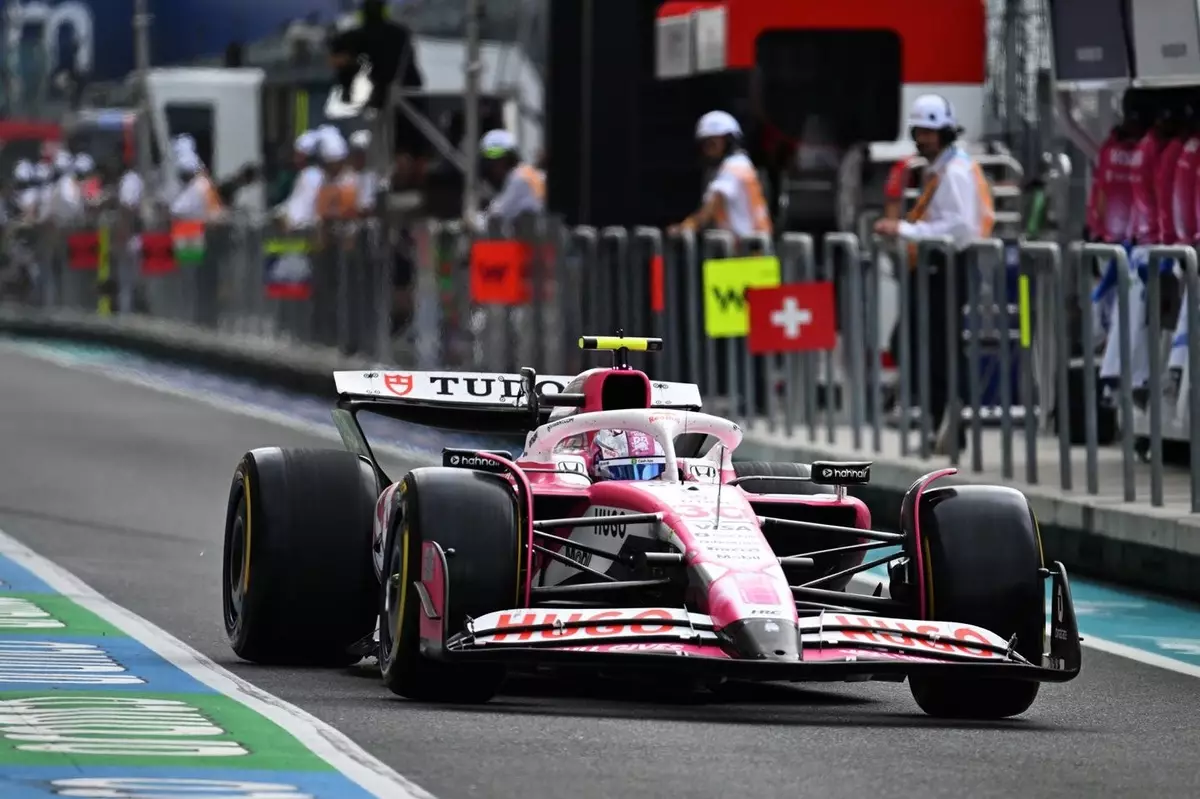The Racing Bulls Formula 1 team is set to roll out a significant upgrade package at the highly anticipated Emilia-Romagna Grand Prix, yet the implications of this update may not be as impressive as one might hope. By introducing new bodywork and a redesigned floor, the team aims to enhance performance at a track they consider home. However, team principal Laurent Mekies warns that while these changes are substantial on paper, the impact might be minimal in reality. This cautious optimism stems from painful lessons learned in previous seasons, particularly concerning the Barcelona upgrade that inadvertently compromised the car’s speed.
The concept of aerodynamic performance plays a pivotal role in modern Formula 1 cars. The floor and bodywork are essential components influencing how well a car cuts through the air. Racing Bulls’ strategy appears to integrate these changes without overhauling their whole design philosophy, opting for a methodical approach rather than risking a dramatic overhaul that could destabilize their performance, reflecting an acute awareness of how sensitive these vehicles are to alterations.
A Cautious Path After Past Setbacks
Mekies’ prudent approach illustrates a broader narrative in Formula 1 racing, where teams are often haunted by the ghosts of reworked components that didn’t yield the expected improvements. For Racing Bulls, this past experience reinforces the necessity of careful, incremental changes rather than reckless gambles. Although the season is well underway, the significant advance in technology earlier in the season may not reap the full rewards, as many teams, including Racing Bulls, have been caught chasing after breakthroughs that never arrived.
Racing Bulls currently sits in eighth place in the standings, an indication of both their potential and their challenge in navigating the fierce midfield battle. Early in the season, they performed remarkably well in China and Japan but have struggled to maintain that momentum. This inconsistency spotlights the relentless pressure teams face to innovate while also preserving their existing strengths. They must find the fine line between pushing for performance and avoiding the pitfalls of overly ambitious modifications.
Treading Lightly in a Competitive Midfield
In the highly competitive environment of the current grid—one where the margins are razor thin—a mere tenth of a second can dictate qualifying positions, transforming what seems like a minor improvement into a significant advantage or disadvantage. Mekies articulated this sentiment perfectly, acknowledging that small steps are indeed the name of the game. The team’s ability to stay competitive hinges on their strategic increments rather than large, risky upgrades, which inevitably lead to performance volatility.
While the upcoming Imola race presents an opportunity for Racing Bulls to test their new components, it also emphasizes the narrow window they inhabit, where slight variations in performance could lead to vastly different outcomes. This begs the question of whether the immediate need for improvement necessitates the incremental upgrades, which could potentially lead the team astray from the broader strategy they have devised for the 2026 season.
The Fork in the Road: Looking Ahead
The Spanish Grand Prix looms on the horizon as a pivotal juncture for Racing Bulls. Mekies suggests that this race will serve as a key indicator for the direction the team should take in terms of the current car concept versus preparations for 2026. The competitive dynamic dictated by recent regulations, such as the crackdown on flexible front wings, adds another layer of complexity. Teams that excel in adapting to these shifts—whether in design or strategy—will likely find themselves either soaring or faltering in the season ahead.
With the imminent potential to switch focus to the next generation of cars looming large, it’s a challenging decision for Racing Bulls. They must evaluate not just their present standing but also how their ongoing development impacts future performance. This narrative encapsulates the essence of Formula 1—it is not merely about speed or technology, but about the strategic foresight required to maintain efficacy in a landscape of constant change.
Through it all, Racing Bulls’ commitment to methodical progress resonates with a fundamental principle of racing—while ambition propels teams forward, temperance in execution often leads to sustainable success.


Leave a Reply